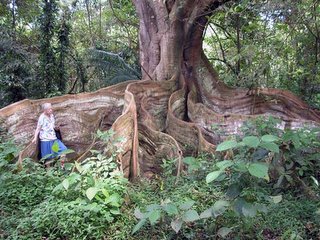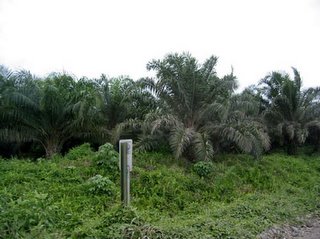Buttressed Tree Roots
 We saw this fascinating tree at a place called Hacienda Baru, which is a couple of kilometers north of Dominical, on the Pacific coast of Costa Rica. Those roots are the same height as my mother, who is about 5' tall.
We saw this fascinating tree at a place called Hacienda Baru, which is a couple of kilometers north of Dominical, on the Pacific coast of Costa Rica. Those roots are the same height as my mother, who is about 5' tall. It is thought that the reason rainforest trees developed these shallow roots is to give the tree a broad base of support under windy conditions. Another theory is that these roots are an adaptation to the shallow rainforest soils, so that the roots seek nutrients near the surface.
If you knock on the roots, it is obvious that they are hollow.



